Dental Treatments
Invisalign

Clear aligners
Invisalign straightens your teeth using custom clear aligners. Each aligner is used for a week or two, during which time the teeth slowly move. They should be worn during 20 to 22 hours a day and you should only remove them to eat, drink and brush your teeth. The duration of treatment depends on the complexity of the treatment and is generally comparable to that of traditional braces, each case is different. Its main advantages are the aesthetics of being completely clear and the fact that you can have a better dental hygiene than using the conventional brackets braces.
Needle-free anesthesia
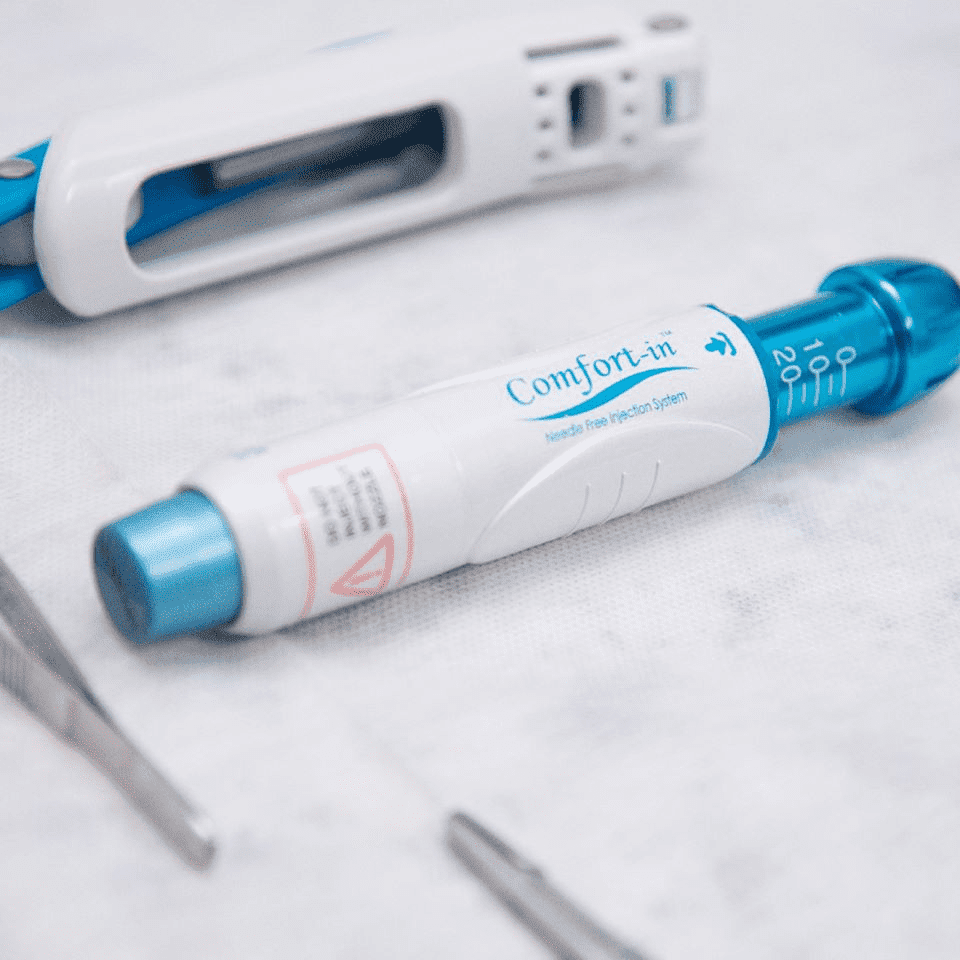
We have in our clinic and at the disposal of our clients, anesthesia without the use of needles, this technique is based on the introduction of the anesthetic by means of pressure, without using a syringe with a needle, this way the anesthetic jet is sprayed, distributing the substance evenly in the region, avoiding damage to tissues, blood vessels and nerves. The main advantages are its easy application, low incidence of side effects, faster absorption and distribution of the anesthetic, and the one that will be the most appealing to the patient, the simple fact that no needle is used.
Panoramic Radiography
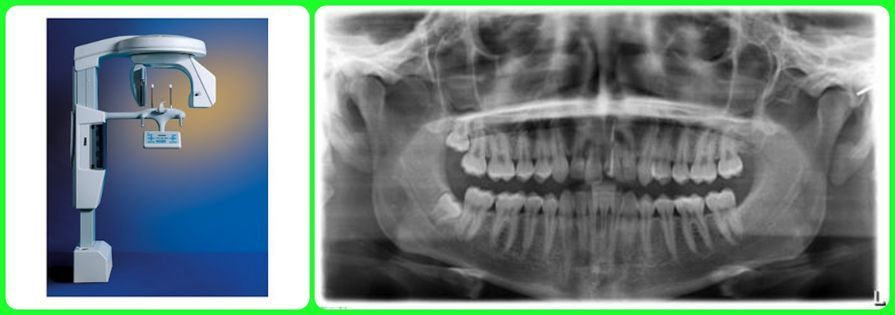
The panoramic radiography allows the observation of almost the entire mouth it is a very simple technique that through a single radiographic view allows to capture a large anatomical area. This examination can be useful, for example, to study the relationship between primary teeth (milk) and permanent teeth, whether the patient has wisdom teeth included or to serve as a guide in the placement of implants. The pictures above show the device of panoramic radiography (left) and an example of a panoramic RX (right).
Teeth Whitening
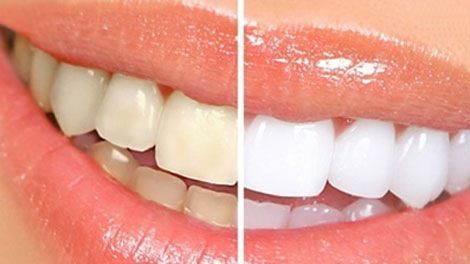
Teeth Whitening as the name suggests aims to make teeth whiter, so this may recorer to various techniques. These procedures can be done in vital and non vital teeth (devitalized). The non-vital teeth bleaching is an individual tooth whitening and is held inside of the tooth, so it is called internal bleaching. As to vital teeth these can be bleached by ambulatory bleaching, performed at home by the patient, using a silicone mold and whitening product or in the office via a specific light (LED or laser).
Implantology

Implantology seeks to restore esthetics and function in cases of missing teeth using titanium structures that replace the tooth root, these structures attach to bone, bone growing around the same (bone integration) allowing to withstand the masticatory forces. The implants are of various types and allow to replace one or more teeth. The placement of implant is performed in a small surgery, the unit or multiple units of prosthetic structure is placed afterwards (after 2-6 months).
The statistics indicate a success rate of 95% after 20 years, that rate drops to 80% in smoking patients. The picture above illustrates the sequence of procedures for placing an implant.
Fixed Prosthodontics
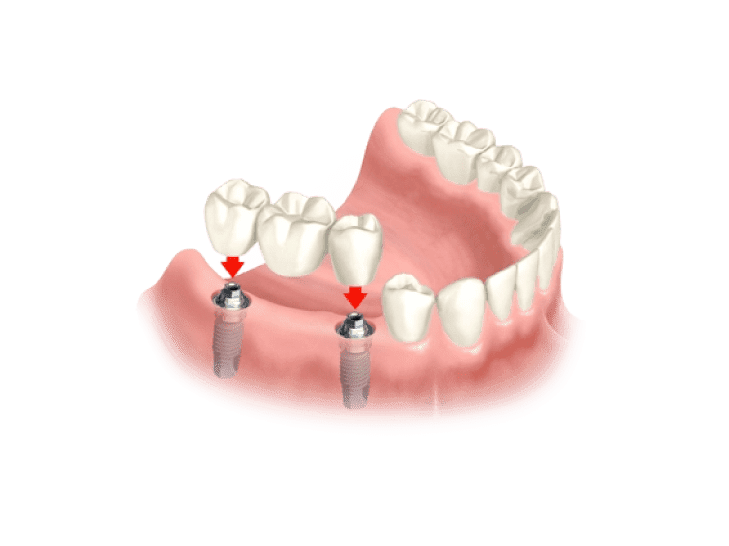
Fixed prosthesis restore the appearance and function, in case of the absence of tooth or destruction of crowns,the fixed frame can not be removed by the patient just by the dentist. In fixed prosthodontics we have various kinds of services such as crowns which are cemented restorations that cover the entire outer surface or the fixed bridges, in these cases the wear of adjacent teeth is necessary and sometimes their endodontic treatment, the teeth serving as support to the structure are called pillars while the teeth that replace missing teeth and are suspended are called pontics; there is still a possibility of fixed structures being supported by implants, as shown in the image that lies above this paragraph. As to the material they are made, these structures may be metallic, metal-ceramic, ceramic, acrylic, zirconium, among others.
Removable Prosthodontics
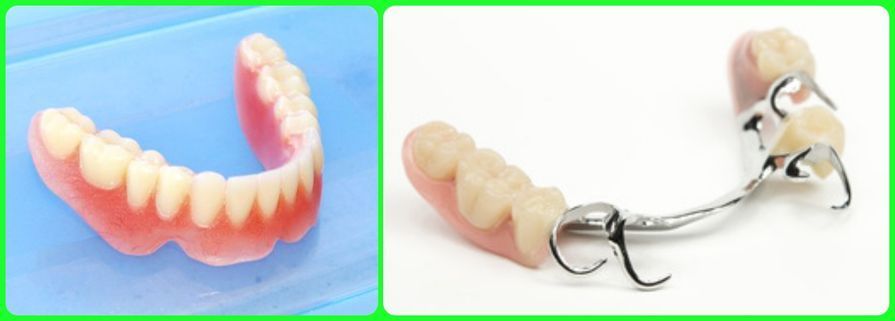
The removable prosthesis can be used in cases where the patient has a lack of one, several or all teeth, it can be removed by the patient for cleaning and to sleep . There are two groups in this field taking into account the material used, acrylic prosthesis and skeletal prostheses, acrylic are completely made of acrylic material that is a "Plastic" while the skeletal have a metal skeleton structure based on the gum and holds in natural teeth. Acrylic dentures are more economic and aesthetic when they do not have metallic hooks, however they are thicker and difficult to adapt to the mouth, while the skeletal prostheses are more expensive and less aesthetic when the metal hooks are visible, however are easier to withstand and adapt. The images above show a full acrylic prosthesis (left) and a partial skeletal denture (right).
Orthodontics
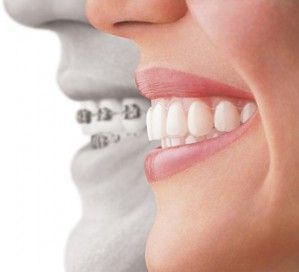
Orthodontics has the objective to straighten the tooth position, for aesthetic and functional issues with this goal several types of apparatus are used, adapted to each case. Orthodontics can be applied at all ages, being an intersection treatment performed in mixed dentition (deciduous or milk teeth and permanent teeth) and in the phase of increased growth of the child, while the final is held in the permanent dentition.
This is an area in which treatments are more time consuming (several months), including different phases, then we have the diagnostic consultation, where x-rays are taken and made impressions in order to choose the best treatment option; consultation for placing the apparatus; maintenance consultations and finally removal of the apparatus, in this last one it is often applied a containment apparatus that prevents the teeth from moving from the position achieved by treatment.
The amounts charged vary, because each case is different, if you want more information make an appointment.
Periodontology

Periodontal or periodontology is the area of dentistry that studies and treats diseases of tissues that surround and support teeth, which is called periodontium. The periodontium consists of the gingiva, alveolar bone, cementum and periodontal ligament and its function is the insertion of the tooth in the jaw bone tissue and maintain the masticatory surface of the mucosa of the oral cavity. The main periodontal diseases are gingivitis (only affects the gums) and periodontitis (affects gums the bone and periodontal ligament), the first step in the treatment is education for a good control of dental plaque because the accumulation of it constitutes one of the main risk factors in the development of these diseases. The treatment may go through scaling, root planing or surgery. The image shows teeth / infected gums and healthy teeth / gums.
Dentistry
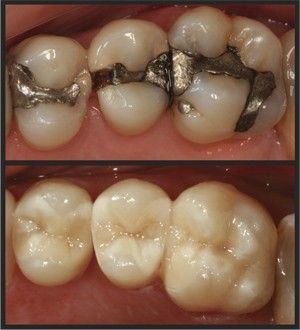
The dentistry is the area of Dental Medicine that "restores teeth" in situations where the tooth is affected by decay, fracture, when you want a change for aesthetic reasons or when you want to replace an existing restoration. When the cavity affects the enamel and / or dentin, the tooth is treated by removing the affected tooth structure and reconstructing it when the dental pulp is affected it is necessary to carry out a endodontics and only after this treatment, the tooth is restored. There are two large groups of restorations, indirect performed in the laboratory and direct performed in the office. As the definitive material used, the most common is composite, but we can also use amalgam. Above there is an image showing the aesthetic differences between amalgam (top) and composite (bottom).
Endodontics or Devitalization
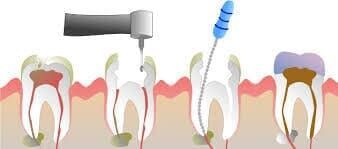
The endodontics is the specialty of Dental Medicine that studies the dental pulp, and all root canals and periapical tissue and the pathologies that affect them. The endodontics gives a "life over" the teeth that would otherwise be destined for extraction. The pathology of the dental pulp may be caused by extensive caries, deep restorations, or trauma (e.g. collision). The thermal testing, radiography or percussion are some of the diagnostic tests to adopt the right treatment. This treatment is normally done in three phases (consultations) being the 1st one the opening of the chamber where after opening and cleaning the channels and the cavity, a drug substance is placed in the channels and the tooth is sealed with temporary material; the 2nd corresponds to the instrumentation consultation where eith files is made the cleaning and remodeling of the channels, in this consultation the tooth also stays with drugs and closed with temporary material; the 3rd consultation corresponds to the filling or closing of channels, in the end the tooth is reconstructed with composite or amalgam. Next we have a scheme
Oral Surgery
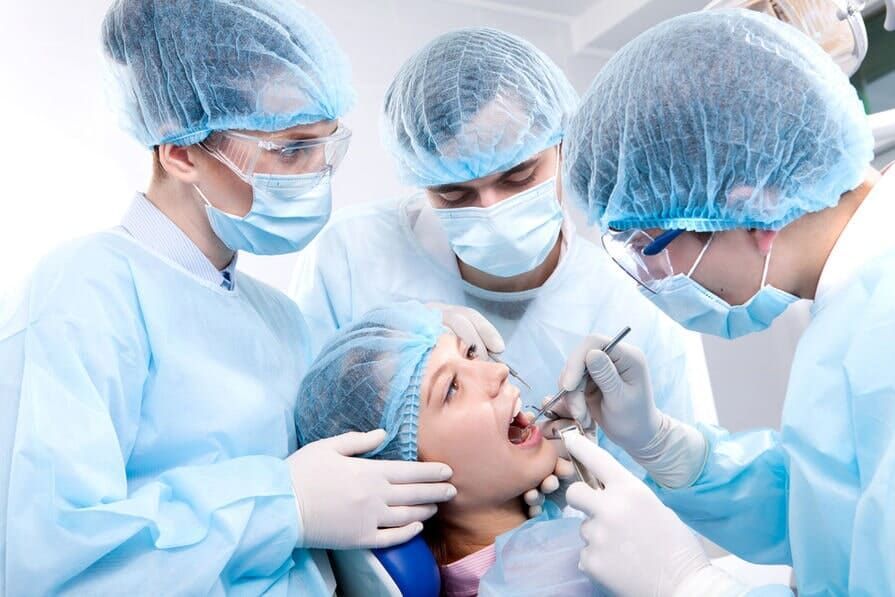
Oral surgery is the area responsible for the broad range of invasive clinical protocols, of these are part, for example, the simple teeth extractions, extraction of impacted teeth, removal of small lesions frenectomies, biopsies, bone grafts, etc.
Next is a list of the main precautions to take after surgery:
During the first 24 hours you should eat soft and cold food;
Don't smoke for 24 hours;
You should avoid lowering your head while sleeping using a pillow that allows you to keep the head higher;
Avoid making physical efforts.





